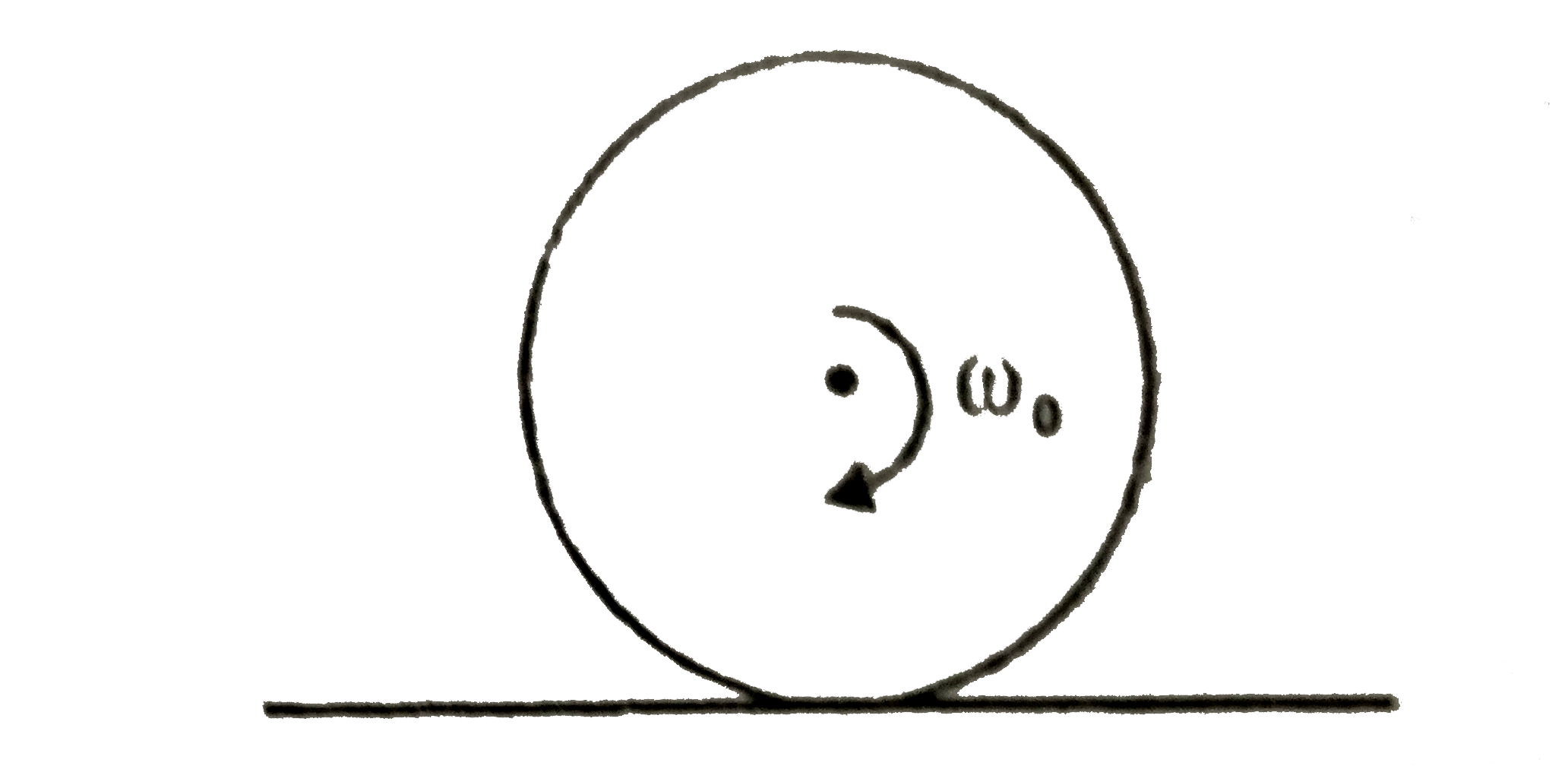A drum of mass m1 and radius r1 rotates freely with initially angular velocity ω0. A second drum with mass m2 and radius r2(r2>r1) is mounted on same axle and is at rest although it is free to rotate. A thin layer of sand with mass m is distributed on iner surface of smaller drum. At t=0 small perforations in the inner drum are opened. The sand starts to fly out at a consant rate λkg/sec and sticks to the outer drum. Ignore the transit time of the sand. Choose the corect alternatives.
Angular speed of outer drum at time is λtω0m2+λt(r1r2)2
Difference in final angular speeds of two drums is 0
Difference in final angular speeds of two drums is (m(r22−r21)+m2r22(m+m2)r22)ω0
Angular speed of inner drum remains constant
The correct Answer is:A, C, D

As the sand leaves the inner drum through the open holes, it does not exert any force of the drum, angular momentum remains conserved.
At time t,
m1r21ω0=(m1−λt)r21ω0+(m2+λt)r22ω2
ω2−(λtr21ω0)
((m2+λt)r22)
The speed of inner drum does not change.
Topper's Solved these Questions
- TEST PAPERSBOOK - FIITJEECHAPTER - TEST PAPERSEXERCISE - PHYSICS
747 Videos
- SIMPLE HARMONIC MOTIONBOOK - FIITJEECHAPTER - SIMPLE HARMONIC MOTIONEXERCISE - Assignment Problems (Objective) (Level-II)
20 Videos
- WORK, ENERGY AND POWER BOOK - FIITJEECHAPTER - WORK, ENERGY AND POWER EXERCISE - COMPREHENSIONS ( Comprehension-II)
5 Videos
Similar Questions
Knowledge Check
A ring of radius 'r' and mass per unit length 'm' rotates with an angular velocity 'ω' in free space then :
ATension in ring is zeroBTension will vary at all pointsCTension is constant throughout ringDTension in string is mω2r2A rough disc of mass m rotates freely with an angular velocity ω. If another rough disc of mass m2 and same radius but spinning in opposite sense with angular speed ω is kept on the first disc. Then:
Athe final angular speed of the dise is ω3Bthe net work does by friction is zeroCthe friction does a positive work on the lighter discDthe net work done by friction is −mR2ω23
A disc of mass m and radius R rotating with angular speed ω0 is placed on a rough surface (co-officient of friction =μ). Then

View SolutionA disc of mass m and radius R rotating with angular speed ω0 is placed on a rough surface (co-officient of friction =μ). Then

View SolutionA ring of mass m and radius R is being rotated about its axis with constant angular velocity ω in the gravity free space. Find tension in the ring.
View SolutionA disc of mass M and radius r is rotating with an angular velocity ω. If gently, two masses m each are placed at a distance r/2 on either side of the axis of rotation, what will be the new angular velocity ?
View SolutionThe radius of the base of a cylindrical water-drum open at the top at the top is 35 cm and height 1.3m. Find the inner surface area of the water-drum.
View SolutionThe radius of the base of a cylindrical water-drum open at the top at the top is 35 cm and height 1.3m. Find the inner surface area of the water-drum.
View Solution
